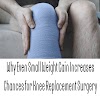Having a sick child is a concern, and doing everything you can to make your child feel better and recover is your number one priority as a caregiver. Yet parents often think that antibiotics will cure everything. "Antibiotics only work against the bacteria that make us sick, but for the vast majority of children, viruses are the culprit," says Mark Brockman, a pediatrician at Norton Children's in Louisville, Kentucky. "Antibiotics don't work against viruses because they work specifically against bacteria," he told pediatricians. Brockman says, but most often it's for reasons such as the child's age and severity. Inappropriateness of their symptoms.
"Many less severe bacterial infections go away without treatment, so it's a good idea to wait at least 24 to 48 hours to see if your child's symptoms worsen or improve on their own. Kavita Desai, PharmD, an expert in women's health and disease prevention, told Healthline. Antibiotics may be considered if it is determined that it is, she added.
How overuse of antibiotics can harm kids
Antibiotics are essential in treating many ailments, but Brockman said antibiotics can sometimes be harmful. “Like any medicine, the use of antibiotics has side effects. Some antibiotics can have unintended consequences such as nausea and diarrhea. "There can be more serious consequences," he said. give way to and can cause infection. "Antibiotics not only target harmful bacteria that cause infections, they can also kill healthy bacteria in the gut that support proper digestion and maintain overall health," says Desai. says Mr.
When the body is deprived of healthy bacteria, life-threatening bacteria like C. difficile (C.diff), which infects the intestine and colon, can multiply rapidly and lead to death.
In 2010, after dental work, she was prescribed antibiotics to prevent infection. A few days after starting her antibiotics, she developed diarrhea and was taken to the hospital. There she was diagnosed with C.diff and sepsis. Sepsis is a life-threatening condition that occurs when the body tries to fight off infection and damages its own tissues. Ironically, the only way to treat C.diff and sepsis is with the antibiotics Peggy was administered. However, she died of septic shock just six days after seeing a dentist. "My mother was put on antibiotics for an infection she didn't have. The infection killed her and needed antibiotics to treat it. After her mother's death, Lilith and her brother founded the Peggy Lilith Foundation (PLF) to educate the public about C.diff. Part of their effort includes providing information on antibiotic use
In 2010, after dental work, she was prescribed antibiotics to prevent infection. A few days after starting her antibiotics, she developed diarrhea and was taken to the hospital. There she was diagnosed with C.diff and sepsis. Sepsis is a life-threatening condition that occurs when the body tries to fight off infection and damages its own tissues. Ironically, the only way to treat C.diff and sepsis is with the antibiotics Peggy was administered. However, she died of septic shock just six days after seeing a dentist. "My mother was put on antibiotics for an infection she didn't have. The infection killed her and needed antibiotics to treat it. After her mother's death, Lilith and her brother founded the Peggy Lilith Foundation (PLF) to educate the public about C.diff. Part of their effort includes providing information on antibiotic use
“Our mother was hospitalized and in septic shock before she heard the word C. diff.
In 2019, his foundation launched the See C.diff campaign to help people with the disease and when they don't need it. Raised awareness about why using antibiotics is harmful.
In 2019, his foundation launched the See C.diff campaign to help people with the disease and when they don't need it. Raised awareness about why using antibiotics is harmful.
Antibiotic resistance is considered a top threat by the CDC
The Centers for Disease Control and Prevention (CDC) explains that antibiotic resistance occurs when bacteria and fungi mutate in ways that give them the ability to defeat antibiotics designed to kill them. states that the greatest problem with inappropriate use of antibiotics is the development of bacterial resistance. "This means that other, more potent antibiotics will have to be used, which also creates the possibility of resistance to these antibiotics. This usually requires hospitalization and in some cases, Patients can die from overwhelming infections," he said.
Infections that were once common and easy to treat can, over time, turn into serious, untreatable infections, Desai added. “This has the amplified effect of spreading these contagious infections more widely in the larger community, as abused infections spread more widely to families and groups such as schools, community centers and day cares,” she said. The problem is compounded by the fact that new antibiotics are difficult to develop and that bacteria may overtake development. "It is therefore very important to use antibiotics only when absolutely necessary," Brockman said.
How to talk with your child’s doctor about antibiotics
If your child is sick, the following may help discuss antibiotic use:
- Record in detail when your symptoms started and how they progressed. "We need to know as much as possible about our child's symptoms in order to create the best possible care plan, and we can also provide parents with predictive guidance," Brockman said. .
- If the doctor determines that the infection is not bacterial, tell the doctor that he will wait until the culture returns or he will wait 24 to 48 hours to see if the symptoms go away on their own. No problem, says Desai. First she starts on antibiotics. process.
- Talk to your doctor about which antibiotic is best for your child's infection. Desai said some antibiotics treat very specific bacteria, while others can treat a wide range of bacteria. "It's always best to choose an antibiotic with the narrowest spectrum of action to reduce the risk of exacerbating the problem of antibiotic resistance," she said.








0 Comments